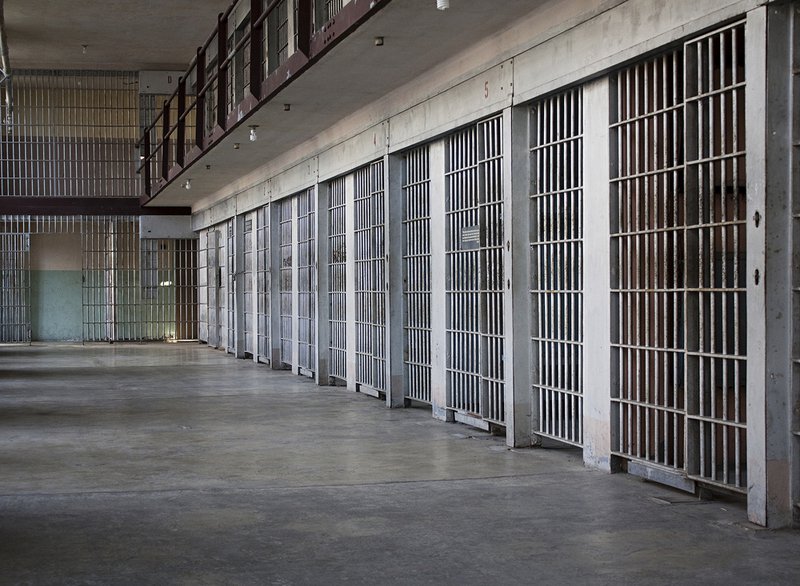The Missing Piece of the Criminal Justice Reform Discussion
Weekly Article

Jan. 11, 2018
Is it possible to remain incarcerated even after having been set free?
America has, over the past several years, begun to tussle more deeply, or at least more publicly, with the issue of mass incarceration—with how, for instance, it over-incarcerates its citizens (and overwhelmingly people of color), and how companies have profited from this trend. And yet, there’s often a missing piece of the criminal justice reform discussion: reentry, and the attendant obstacles faced by those navigating a society not built for people previously behind bars.
This point was one of a few central planks of a conversation on Wednesday, hosted by New America, centered around how prisons often fail to rehabilitate. “A good place to think about a holistic approach [to criminal justice reform] is to think about the real challenges”—including, historically, securing employment, securing housing, and voting—“of reentry,” said the event’s moderator Marcia Chatelain, who’s a New America National Fellow and an associate professor of history and African American studies at Georgetown University. She wanted to know: how to ensure that people leave prison and return to “an ethical and dignified world” that cares?
For Reginald Dwayne Betts, a New America National Fellow and one of the panelists, it’s largely impossible not to view this question as personal. In 1996, when Betts was 16 years old, he was sentenced to nine years in prison for a carjacking. “But it’s not just about my experience,” Betts said. It’s also about the experiences of people I know who still struggle every day with stigma, who still struggle every day with the ways in which … they’re blocked from achievement.”
It’s easy, perhaps, to read about Betts and miss the yawning holes in the glistening American notion of reform and rehabilitation through incarceration. Betts, after his release in 2005, wrote a book of poetry, 2015’s Bastards of the Reagan Era, that Michiko Kakutani, former chief book critic for the New York Times, lauded as “fierce, lyrical and unsparing.” And, in 2016, he graduated from Yale Law School, where he’s now a Ph.D. in Law candidate. “But literally at every step of the way,” Betts said, “doors that I’d expected to be opened with less fight have frequently required a kind of effort that we shouldn’t expect anybody to have to exert.” Take how even though Betts passed the Connecticut bar exam in February of 2017, his application was initially denied; there were concerns about what his conviction, from some 20 years ago, said about his “moral character.” He was eventually accepted to the bar later that year, but it was only after a period of review.
Which is to say: America punishes people long after they’ve done their time.
Marc Morjé Howard, a professor of government and law and the director of the Prisons and Justice Initiative at Georgetown University, echoed this sentiment, though he put it a bit more crassly: “In terms of reentry, it’s a disaster.” And, no, Howard wasn’t being hyperbolic.
“First of all, the period of incarceration is about getting people ready for reentry. They say: ‘The punishment is over. Your punishment was simply being separated from society. Prison is about trying to help you reenter, help you get better,’ whether it’s job training, whether it’s education, whether it’s social services,” Howard said. In America, however, “there’s no fresh start. We talk about second chances—first of all, many people didn’t have a first chance, but then they don’t even have a second chance when they come out.” He said that the question people ought to ask is: “Why aren’t we letting out all the other Dwaynes in there who deserve a chance?”
There’ve been efforts to reform, of course. For instance, “ban the box”—a reference to the tick-box on job applications indicating whether a candidate has a criminal record—now has some degree of legal standing in dozens of states and over 100 cities or counties across the country. Nonetheless, advocates and policy experts contend that far more needs to be done to expand “ban the box” and squelch the tension between the promise of reentry and those looking to realize it, given that most returning inmates, even those who’ve gone through halfway homes, continue to struggle to access basic services—due in no small part to state and local laws. (In 2016, Virginia rolled back its insidious, racist history of disenfranchisement, allowing people with previous felony convictions to vote, but the same can’t be said for many other states.)
Put another way, America’s brand of rehabilitation—as Howard pointed out, criminal justice works in better, less strictly punitive ways in other countries—is rose-colored rather than realistic. It insists that it brings out the absolute best in American society, when, as is usually the case, it’s used to punish, over and over again, those it’s already deemed society’s worst.
But the past—or present, rather—need not be prologue. “The talents and gifts that we have right now … we have an opportunity to move this boulder. We’re prepared to fight this, because we bring different types of knowledge to this problem,” Chatelain said. She added that the work Betts and Howard do and the perspectives they possess not only push people to understand the issue, but also—crucially—prod people to use their talents “in order to upend the system.”